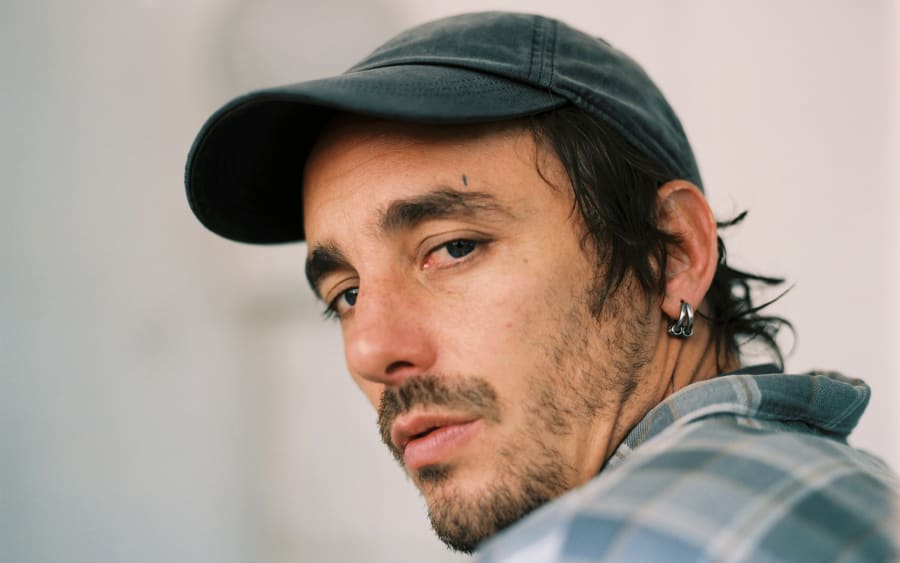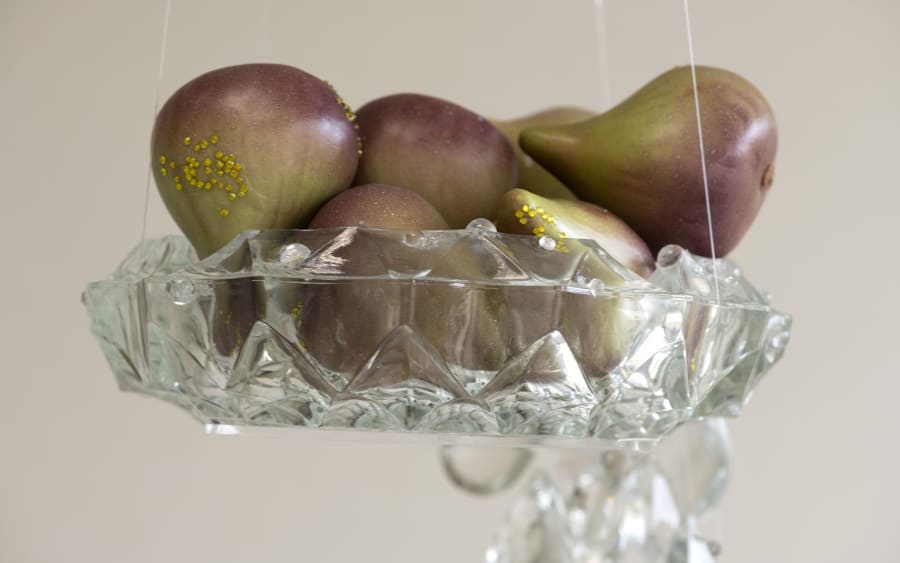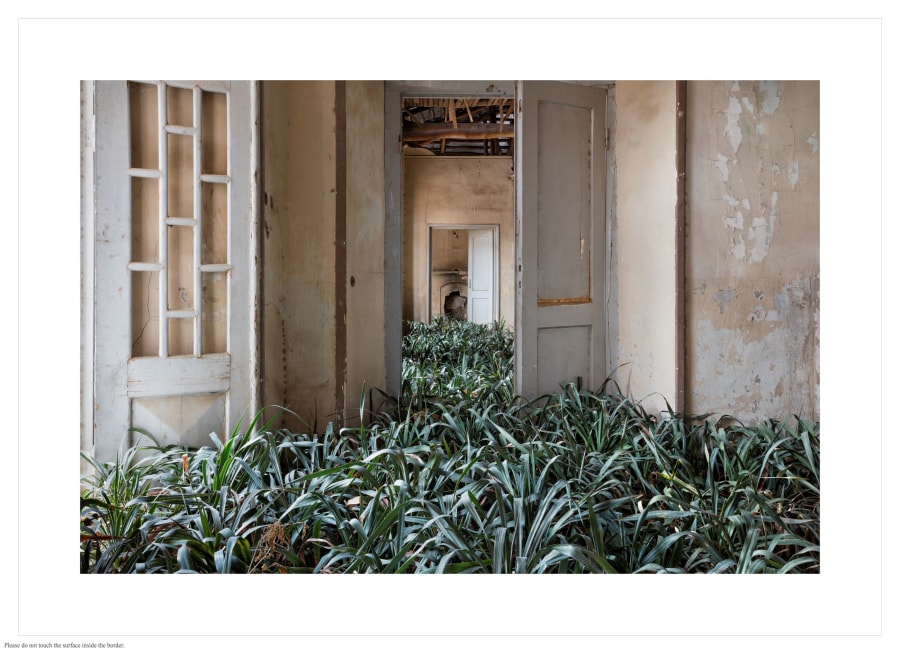The ten rules of the art department at the Immaculate Heart College in Hollywood, Los Angeles, begin with ‘Rule 1: Find a place you trust and then try trusting it for a while.’ And end with a quote from John Cage, ‘Rule 10: “We’re breaking all of the rules. Even our own rules and how do we do that? By leaving plenty of room for X quantities.”’ The rules were written by Sister Mary Corita Kent around 1966 when she was the head of the art department. The list adorned the walls, reminding students of their purpose and role as artists – to make rules and break them.
These rules capture something essential to Corita’s practice and life: the establishment of a form or structure, a place of trust, and then a breaking down or abandonment of that structure to make room for new possibilities. Corita worked primarily with serigraphy – printing on silk – a medium that requires trust as part of its process – trust that may resemble something like faith. Corita often spoke about this trust in her work and its possibilities, and seeing what would happen through her engagement with raw materials. There was an element of chance or experimentation in the production of each piece.
Corita was born Frances Elizabeth Kent, in Iowa, in 1918, but grew up primarily in Los Angeles. At the age of 18, she joined the order of nuns called the Immaculate Heart of Mary, taking on the name Mary Corita (little heart). She took her vows of poverty, chastity, and obedience, and in doing so committed to devoting her life to Christ and the church. In 1947, after a brief stint teaching in Vancouver, Canada, she returned to Immaculate Heart College where she worked in the art department. Around the early 1950s, Corita discovered screen printing and began making works depicting the religious family or saints in an expressionist style. Her images of Christ were rendered in bright colors and abstracted forms with handwritten texts from the Bible.
By the mid-1950s, Corita was gaining wider recognition as a teacher and artist. Because of the attention she had brought to the college, she was able to invite artists and thinkers to speak to the community. Alfred Hitchcock, Buckminster Fuller, John Cage, Charles and Ray Eames, and Saul Bass were among the distinguished visitors.
After the convening of Vatican II, in 1963, during which Catholic leaders from all over the globe met to consider the church’s rules and how to adapt them to the modern world, Corita’s sisterhood began to reconsider its own practices. Together they re-evaluated the goals of their community, questioning the hierarchy of the church at large. They became more politically and civically engaged, participating in protests and political demonstrations throughout the city – against the war in Vietnam and police brutality in Los Angeles, and in support of the farm workers movement. They gained a reputation as avant-garde rebellious nuns, at a certain point even abandoning the requirement of dressing in a habit.
At this time Corita’s colors were getting brighter, the shapes more abstract, and her practice more distinctive and defined. The carefully painted Sacred Heart of her earlier work was now an oblong circle in bright red. In 1963, she made a print using just the red, yellow, and blue of the Wonder Bread packaging. She began pulling imagery and text from things around her, from street signs, billboards, advertising, and newspapers. Her work began to move in the direction of pure Pop, appropriating slogans from adverts and combining them with Bible verses. In one provocative move in 1964, in a print developed from a Del Monte tomato advert, she wrote, ‘Mary Mother is the juiciest tomato of them all.’ Her work continued to be challenging, becoming more political and critical in the coming years, particularly of race relations in the United States and the country’s involvement in the Vietnam War.
By 1967–68, the tensions had become high between the Immaculate Heart of Mary sisters and the Archbishop of Los Angeles who saw the sisters’ actions, and especially those of Corita, as undermining the authority of the church. By the end of the 1960s, the majority of the sisters chose to dispense with their vows and establish the Immaculate Heart Community, an ecumenical group which allowed them to continue their progressive work. By this time, Corita had left LA and retreated to the East Coast on a sabbatical that never ended. In 1968, she sought dispensation from her vows and left the order, though remained close to many women within the community. She continued making art, drawings, photographs, and prints until her death in 1986.
Corita’s influential pedagogical practice was all about this combination of imposed limitations and discipline, and pushing the limits. Rather than perfecting a craft or a skill, the most important thing she taught her students was how to look, and how to observe the world around them with a distinct focus. She had students cut a square in a piece of cardboard and visit the car wash across the street to look at all the signs, colors, car parts, and people through a cropped view, literally producing one’s own point of view with a simple device.
The tasks Corita set her students were very methodical and repetitious. She told them in a recorded lesson from 1967, ‘I think assignments are helpful in terms of limitations, in that they allow you to do something instead of everything… you are free not to do everything.’ It’s interesting to consider this thinking in the context of Corita’s religious life – a life which imposes certain disciplines, in which prayer, vows, dress, and rituals are a way to contemplate the vastness of God and view the world and spiritual mystery through a devoted and strict practice. Her work as an artist and teacher was certainly an extension of this kind of spiritual thinking.
‘Corita Kent. La révolution joyeuse’
Until December 21, 2024
Collège des Bernardins, Paris
Gracie Hadland is a writer based in Los Angeles.
Caption for header image: Immaculate Heart College Art Department, c. 1955. Photograph by Fred Swartz. Courtesy of the Corita Art Center, Los Angeles, corita.org.
Published on November 26, 2024.


